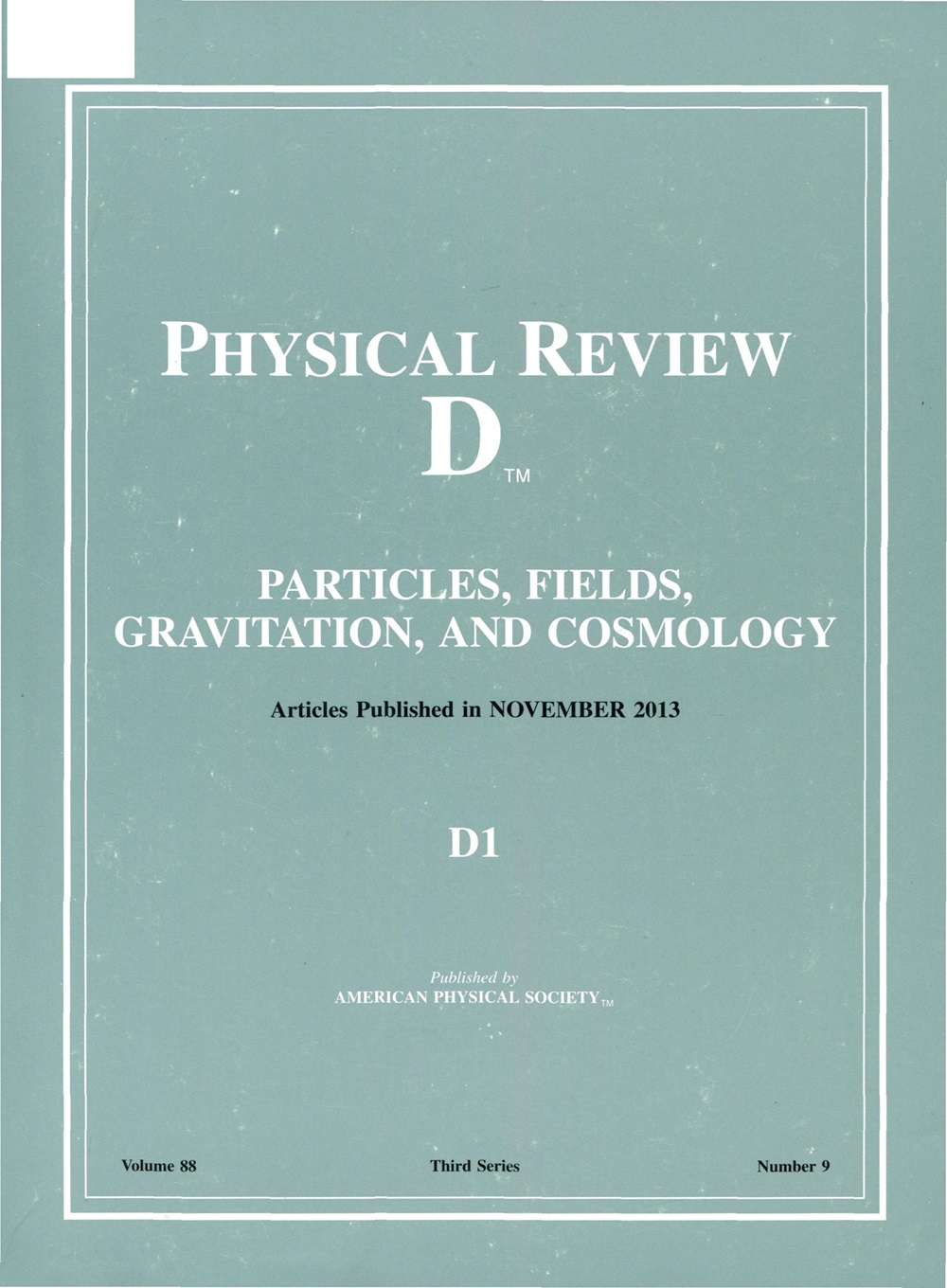Ensembles of center vortices and chains: Insights from a natural lattice framework
IF 5.3
2区 物理与天体物理
Q1 Physics and Astronomy
引用次数: 0
Abstract
A scenario to understand the asymptotic properties of confinement between quark probes, based on a 4D mixed ensemble of percolating center-vortex world surfaces and chains, was initially proposed by one of us in a non-Abelian setting. More recently, the same physics was reobtained by means of a Schrödinger wave functional peaked at Abelian-projected configurations, which deals with center-vortex lines and pointlike monopoles in real space. In this work, we formulate the Abelian-projected ensemble and reassess the non-Abelian one within the Weingarten lattice representation for the sum over surfaces. In the phase where world surfaces are stabilized by contact interactions and percolate, lattice gauge fields emerge. This generalizes the Goldstone modes in an Abelian loop condensate to the case where non-Abelian degrees of freedom are present. In this language, the different natural matching properties of elementary center-vortex world surfaces and monopole worldlines can be easily characterized. In the lattice, the Abelian setting also implements the original idea that the mixed ensemble reconciles N-ality with the formation of a confining flux tube. In this picture, center vortices and chains explain why Abelian-projected variables capture this property at asymptotic distances while simultaneously allowing for a “dual superconductor” description of the fundamental string. Common features, differences in the continuum, and perspectives will also be addressed.中心漩涡和链的集合:来自自然晶格框架的见解
我们中的一个人最初在非阿贝尔环境中提出了一个基于渗透中心-涡旋世界表面和链的四维混合系综的方案,以理解夸克探测器之间的约束渐近性质。最近,同样的物理现象通过Schrödinger波函数在阿贝尔投影构型中达到峰值的方法重新获得,该方法处理真实空间中的中心涡旋线和点状单极子。在这项工作中,我们制定了阿贝尔投影系综,并在Weingarten晶格表示中重新评估了非阿贝尔系综。在世界表面通过接触相互作用和渗透稳定的阶段,晶格规范场出现。这将阿贝尔循环凝聚中的Goldstone模态推广到存在非阿贝尔自由度的情况。在这种语言中,可以很容易地表征初等中心涡世界表面和单极世界线的不同自然匹配特性。在晶格中,阿贝尔设置也实现了混合系综的n态与约束通量管的形成相协调的原始思想。在这张图中,中心漩涡和链解释了为什么阿贝尔投影变量在渐近距离上捕获了这一特性,同时允许对基本弦的“双超导体”描述。还将讨论连续体的共同特征、差异和观点。2025年由美国物理学会出版
本文章由计算机程序翻译,如有差异,请以英文原文为准。
求助全文
约1分钟内获得全文
求助全文
来源期刊

Physical Review D
物理-天文与天体物理
CiteScore
9.20
自引率
36.00%
发文量
0
审稿时长
2 months
期刊介绍:
Physical Review D (PRD) is a leading journal in elementary particle physics, field theory, gravitation, and cosmology and is one of the top-cited journals in high-energy physics.
PRD covers experimental and theoretical results in all aspects of particle physics, field theory, gravitation and cosmology, including:
Particle physics experiments,
Electroweak interactions,
Strong interactions,
Lattice field theories, lattice QCD,
Beyond the standard model physics,
Phenomenological aspects of field theory, general methods,
Gravity, cosmology, cosmic rays,
Astrophysics and astroparticle physics,
General relativity,
Formal aspects of field theory, field theory in curved space,
String theory, quantum gravity, gauge/gravity duality.
 求助内容:
求助内容: 应助结果提醒方式:
应助结果提醒方式:


